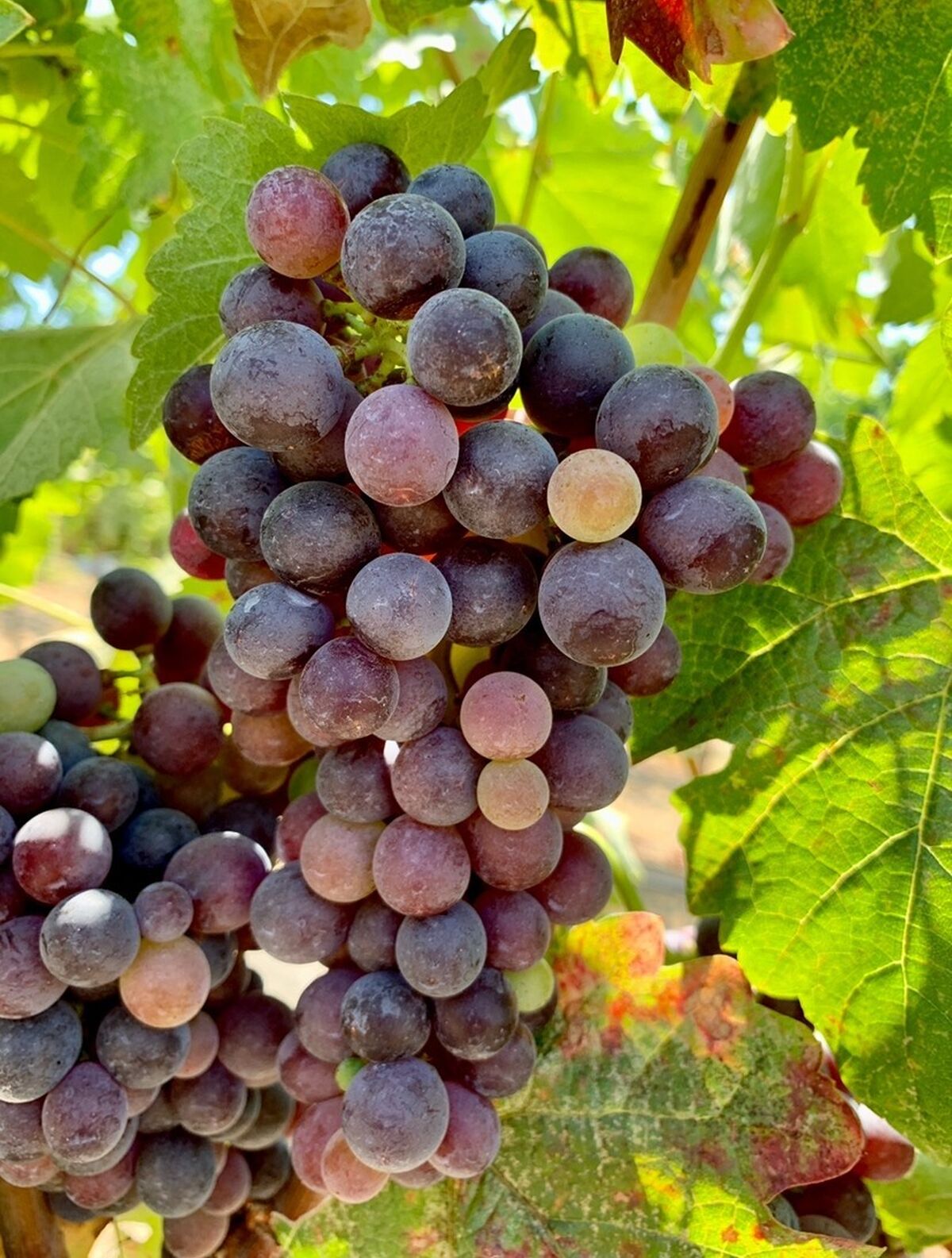Terret Noir
Terret Noir is an ancient grape from the Languedoc, but one whose footprint in Châteauneuf-du-Pape has declined to just 2 acres. We imported it in 2003 as a part of our quest to get all 13 traditional Châteauneuf-du-Pape varieties, and have been pleased to discover its combination of vibrant spiciness, pale color, low alcohol, and grippy structure.

History
Terret Noir is an ancient grape from the Languedoc, one that like Grenache or Picpoul has three color variants (Terret Blanc and Terret Gris are the others). It is first noted in the historical record in 1736, when it was noted for generous production ("Terret noir: produit beaucoup"). Never very widely planted (unlike Terret Gris, which a half century ago showed more than 20,000 acres in Languedoc, much of it used to distill into vermouth) Terret Noir's acreage has declined in recent years, down to some 340 acres in 2016, nearly all in Hérault, the French département that surrounds the university town of Montpellier. Even in Hérault, Terret Noir produces less than 2% of the 900,000 hectoliters of wine the region produces annually and is typically blended into the more-planted Cabernet Sauvignon, Carignan, Grenache, and Mourvedre. Although it is one of the permitted varieties in Chateauneuf-du-Pape, it is barely planted there, with just over two acres planted as of 2009.
Terret Noir at Tablas Creek
The grape was valued for its productivity, its freshness, and its moderate alcohols. In his authoritative ampelography from 1910, P. Viala writes of Terret (translation by Robert Haas), "it produced an abundant harvest that could reach 80 hectoliters per hectare [6 tons per acre]. It was prized on the hillsides because, aside from its fertility, it brought qualities of lightness and freshness of bouquet to the strong and acid varietals (Grenache, Espar, etc.), and to which it married perfectly".
In 2003, we decided that we wanted the complete collection of Chateauneuf-du-Pape varieties, and took field cuttings from Beaucastel of the seven grapes we had not yet imported. Terret was one of these. It spent seven years in quarantine at U.C. Davis before being released to us in 2009, propagated, and in 2010 planted in a half-acre block at the extreme western edge of our property. Our first production off of these vines came in 2013.
Terret Noir In the Vineyard and Cellar
Terret Noir is valuable in part because it is late-budding, and therefore less vulnerable to the spring frosts that are the chief weather hazard we deal with each year. It grows vigorously, and produces large, oval, pinkish red grapes that look more like table grapes than they do like a darkly pigmented grape such as Syrah or Mourvedre. Its upright growth pattern means that it can be head-trained (and typically is in France) but we planted our small block double-cordon on trellis. It ripens relatively late in the growing season, about three-quarters of the way through harvest on average. This puts it in timing in synch with a grape like Counoise.
At harvest, it is relatively modest in sugars (we've picked it between 21.0° and 21.6° Brix each year) and mid-range in acids (pH between 3.4 and 3.8). The skins are light in pigment and the berries large, so it is not a grape that picks up much color during fermentation. In fact, the first year we fermented it, after two weeks it still looked like a rosé, so we kept it on the skins for another week, at which point it hadn't picked up much more color but had accumulated quite a bit of tannin. We have since gone back to a more normal 2-week maceration, accepting the lighter color but keeping the tannins modest.
While we bottled our first few vintages on their own, we expect Terret's primary use to be a blending grape, and since 2016 have paired it with Syrah and Grenache in our Le Complice bottling (for that full story, see here). In a blend, its spiciness, herby savoriness, and low alcohols provide a moderating effect on the more powerful, deeply fruity Syrah and Grenache, while those darker grapes give Terret substance. In exceptional vintages we plan to bottle it on its own, where the resulting wine is reminiscent of pale color, floral, fairly tannic grapes like the Jura's poulsard.
Flavors and Aromas
Terret Noir is pale garnet red, with spicy, lifted aromatics of dried herbs and wild strawberries. On the palate it shows a persistence surprising for such a pale red wine, with crunchy red fruit like pomegranates and red currants, complex notes of black tea and dried roses, good acids, and some grippy tannins on the finish. Although the tannins suggest it should age well, on its own, it seems like it's best within the 4-7 year window, while the freshness of the fruit provides counterpoint to the tannic grip.
This article originally appeared in one of our newsletters. Each newsletter, we spotlight the history and characteristics of one of our Rhone varietals. You can sign up for our mailing list.
You can view a one-minute summary of Terret Noir on our YouTube page.
You can go back to the summaries of the different Rhône grape varietals.
